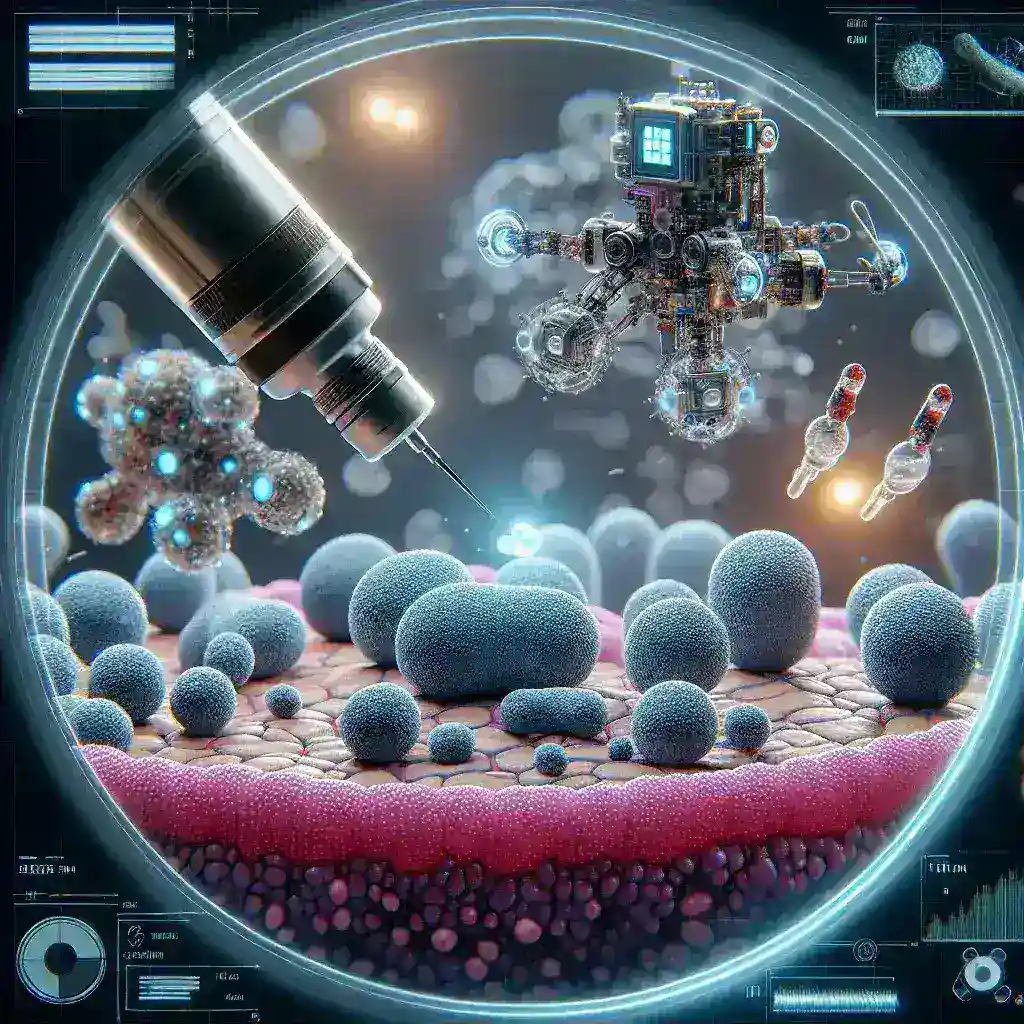Introduction
Diabetes is a multifaceted chronic condition that affects millions of people worldwide. Traditional methods of managing diabetes, including insulin injections, often come with challenges such as inconsistent dosage and the need for frequent monitoring. However, recent advancements in technology, particularly the development of AI powered nanobots, are set to revolutionize diabetes treatment. This article delves into how these tiny robots can deliver insulin directly to pancreatic cells, thus providing a more effective management strategy for diabetes.
Understanding Nanobots
Nanobots, or nanoscale robots, are microscopic devices that can perform specific tasks at the cellular level. With a size typically ranging from 1 to 100 nanometers, these robots are designed to navigate through the human body with precision. Their capabilities include drug delivery, disease detection, and targeted treatment, making them a promising tool in modern medicine.
The Role of AI in Nanotechnology
Artificial Intelligence (AI) enhances the functionality of nanobots by enabling them to make real-time decisions based on the dynamic conditions of the body. For instance, AI algorithms can analyze blood glucose levels and adjust the insulin delivery accordingly. This responsiveness makes AI powered nanobots more effective than traditional insulin pumps or injections.
How AI Powered Nanobots Work
Targeted Insulin Delivery
The primary function of AI powered nanobots in diabetes treatment is to deliver insulin directly to pancreatic cells. This targeted approach ensures that insulin is released exactly where it is needed, improving its efficacy while reducing potential side effects.
Mechanism of Action
- Sensing: Nanobots are equipped with sensors that monitor glucose levels in the bloodstream.
- Navigation: Using AI, they navigate towards the pancreas, guided by chemical signals that indicate the presence of glucose.
- Insulin Release: Upon reaching the pancreatic cells, nanobots release the appropriate amount of insulin, tailored to the individual’s needs.
Advantages of AI Powered Nanobots
Implementing AI powered nanobots in diabetes management presents several advantages:
- Precision: Targeted delivery minimizes the risk of hypoglycemia and ensures optimal blood sugar control.
- Reduced Invasiveness: Unlike traditional methods that require regular injections, nanobots can operate autonomously, reducing the discomfort for patients.
- Real-time Monitoring: Continuous sensing allows for immediate adjustments in insulin delivery, improving patient outcomes.
Historical Context of Diabetes Treatment
Historically, diabetes management has evolved from dietary restrictions in ancient times to the discovery of insulin in the 1920s, which revolutionized treatment. While insulin therapy has been a breakthrough, it comes with limitations, including the need for manual injections and the risk of dosage errors. The introduction of continuous glucose monitors (CGMs) and insulin pumps marked significant advancements, but the integration of AI powered nanobots is pushing the boundaries of what is possible in diabetes care.
The Future of Diabetes Treatment
As we look ahead, the future of diabetes treatment is likely to be marked by increased personalization and automation. AI powered nanobots could pave the way for:
- Fully Automated Systems: Imagine a world where diabetes management is completely automated, with AI powered nanobots working seamlessly in the background.
- Integration with Wearable Technology: Future developments may allow nanobots to communicate with wearable devices, providing real-time data to patients and healthcare providers.
- Broader Applications: While the focus is currently on diabetes, the technology could extend to other chronic conditions requiring precise drug delivery.
Challenges and Considerations
Regulatory Hurdles
Despite the promising potential of AI powered nanobots, their development and implementation face significant regulatory challenges. Ensuring patient safety and efficacy will require rigorous testing and validation.
Ethical Implications
The deployment of nanobots raises ethical questions regarding privacy, consent, and the implications of autonomous decision-making in medical treatments. Engaging in transparent discussions about these issues will be vital as technology evolves.
Conclusion
AI powered nanobots represent a groundbreaking advancement in the management of diabetes, offering targeted insulin delivery that could transform patient outcomes. While challenges remain, the potential for improved precision, reduced invasiveness, and real-time monitoring can redefine diabetes care. As we continue to explore the possibilities of this innovative technology, it is essential to address the ethical and regulatory considerations that accompany such profound advancements in medicine.

